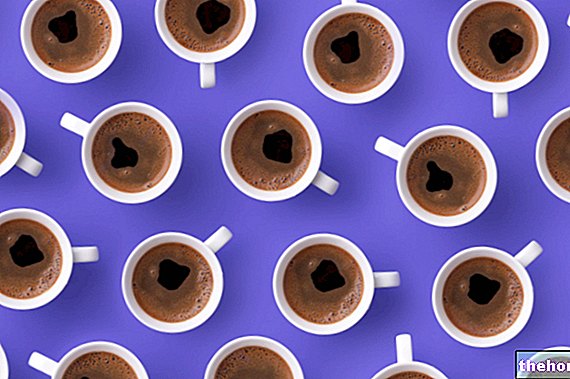Most common sweeteners and properties
Saccharin, aspartame or fructose are often added in place of sugar to sweeten foods in an attempt to save a few calories and do your figure a favor.

Synthetic sweeteners (aspartame and saccharin are the most common), are not found in nature but are synthesized in the laboratory. Aspartame in particular has a sweetening power 200 times higher than sugar, while that of saccharin is even 450-600 times higher. Therefore 200 grams of sugar are needed to have the same sweetening power as a gram of aspartame
Natural sweeteners are those that, like honey or fructose, are found as such in nature. Fructose in particular has a lower glycemic index than sugar while its sweetening power is slightly higher (about 33%) more.
NATURAL SWEETENERS
SEMI-SYNTHETIC SWEETENERS
SYNTHETIC SWEETENERS
Honey
Aspartame
Acesulfame K
Fructose (levulose)
Cyclamates
Dextrose
Saccharin
Sorbitol
Mannitol
Xylitol
- Calories - Sweetening power similar to sucrose
- They stimulate the production of insulin although to a lesser extent than sugar
- Acaloric - Sweetening power greater than sucrose - They do not stimulate the production of insulin (although the latest research may exert an indirect stimulus). See: Synthetic sweeteners: toxicity, physiological and metabolic effects
Other "natural" sweeteners are glucose syrup and fructose syrup
DISSOLVE SOME MYTHS
The calories provided by cane, raw and white sugar are more or less equivalent, the differences are minimal and not significant on a nutritional level.
Honey has a lower calorie content than sucrose (304 Kcal per 100 grams against 392 for traditional sugar and 362 for cane sugar) because it is richer in water. Despite this, a teaspoon of honey provides more calories and carbohydrates than a teaspoon of sugar, due to the higher specific weight. Honey, especially if not crystallized, is also more difficult to dose.
The "sugar-free" candies and chewingum with sugar alcohols can induce a laxative effect when their consumption exceeds 20 grams / day, equal to about 10 candies.
Artificial sweeteners: are they good or bad?
The World Health Organization advises not to exceed 10% of total calories through the consumption of sugars. For a diabetic, sucrose should not exceed the limit of 5% of the daily caloric intake.
Excessive consumption of this natural sweetener increases the risk of falling into the trap of obesity with all the negative consequences of the case (hyperlipidemia, insulin resistance, cardiovascular problems, greater susceptibility to some cancers).
Considering all these factors, the use of artificial sweeteners would seem decisive and highly healthy. In reality, it is quite optimistic to hope to keep caloric intake under control simply by adding an artificial sweetener to coffee at the end of the meal. It is also not advisable to resort too often to dietetic products that contain them since on the one hand their safety is widely documented, on the other hand there are still no studies on their toxicity for chronic use over a long period of time and at high doses.
Recent is, for example, the news of a research that demonstrates, for the umpteenth time, the carcinogenicity of aspartame on rats. This study caused quite a stir and - although luckily humans and mice are not the same - it nevertheless reminded us that for safety it is good not to overdo the consumption of artificial sweeteners.
Artificial sweeteners and obesity
If we think about it, artificial sweeteners can also have a detrimental effect since they accustom the palate to prefer sweet foods.
Maintaining the sweet habit makes it easier to consume high-calorie foods such as sweets and sugary drinks. On balance, artificial sweeteners can therefore have a fattening effect.
It is not true that "sugar-free" products are not fattening and can be consumed freely. In fact, many of these products also provide significant amounts of calories and their use can induce a false sense of security, leading the subject to ingest excessive quantities.
Artificial sweeteners can therefore frighten both for the possibility of toxic effects in the long term, but also, ironically, for the danger of obesity deriving from their indiscriminate use.
SUMMARY TABLES
SWEETENER
SWEETENERS
BENEFITS
DISADVANTAGES
SWEETENING POWER (sugar = 1)
CALORIES PER DOSE (equal to 1 tablespoon of 4 g sugar)
Sucrose
Good taste
Increased blood sugar
1
16
Fructose
Moderate rise in blood sugar
Calorie intake: limit quantities.
1.5
9
Sorbitol
Moderate increase in blood sugar
Caloric intake. Laxative effects.
0.6
26
Cyclamates
They do not increase acaloric blood sugar
Not recommended for pregnancy and children
30
=
Saccharin
It does not increase the blood sugar
Metallic aftertaste. Not recommended for pregnancy and children
400
=
Acesulfame K
It does not increase the blood sugar. It has no aftertaste
Not recommended for pregnancy and children. Scarce epidemiological studies
200
=
Aspartame
Does not increase blood sugar Negligible energy intake. Natural sweet flavor
Contraindicated in phenylketonuria. Not recommended for pregnancy and children. Unstable on cooking
200
0.1
Acceptable Daily Intakes
D.G.A. of the most commonly used sweeteners on the market
For each sweetener, including sugar, there are intake limits:
SWEETENERS
D.G.A.
Cariogenic
Sweetening power compared to sucrose
WARNINGS
Aspartame (synthetic)
0-40 mg / kg
no
180-200 times higher
Do not use in cooked, fried or sterilized foods. No use in pregnancy and infancy (purely for precautionary purposes). No use of phenylketonuria
Cyclamate (synthetic)
0-11 mg / kg
no
25-50 times higher
No use during pregnancy and infancy (for precautionary purposes only)
Saccharin (synthetic)
0-2.5 mg / kg
no
300-500 times higher
Metallic aftertaste; no use during pregnancy and infancy (for precautionary purposes only)
Acesulfame (synthetic)
0-9 mg / kg
no
130-200 times higher
No use in pregnancy and infancy (for precautionary purposes only)
Fructose (natural)
0-40 g / day
yes, but less than sucrose
1.2-1.5 times higher
> 40 g / day turns into glucose
Mannitol (natural)
0-2.5 mg / kg
yes, but less than sucrose
50%
Little absorbed intestinal level. It has laxative effects with doses of 10-20 g / day. No use in pregnancy and infancy
Sorbitol (natural)
Absent
yes, but less than sucrose
60%
Like mannitol
Other Foods - Sweeteners Acesulfame K Aspartame Sugar beet Sugar cane Sodium cyclamate Dextrose Sweeteners Erythritol Fructose Maltose Mannitol Molasses Saccharin Saccharose Maple syrup Agave syrup Fructose syrup Glucose syrup Sugar sorbitol Articles Stevia Sucralitol sugar SWEETENERS Categories Alcoholic Foods Meat Cereals and derivatives Sweeteners Sweets Offal Fruit Dried fruit Milk and Legumes Oils and Fats Fish and fishery products Salami Spices Vegetables Health recipes Appetizers Bread, Pizza and Brioche First courses Second courses Vegetables and Salads Sweets and Desserts Ice cream and sorbets Syrups, liqueurs and grappas Basic Preparations ---- In the Kitchen with leftovers Carnival recipes Christmas recipes Light diet recipes tici Recipes for the Holidays Recipes for Valentine's Day Vegetarian Recipes Protein Recipes Regional Recipes Vegan Recipes
















.jpg)











